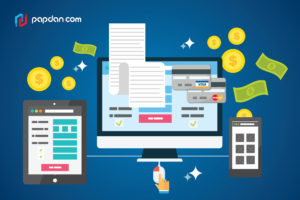Today, credit card is the most efficient method that many people can use. Therefore, it is important for any web developers and web designers to develop and design a payment page that will make users feel comfortable to interact with. However, first, you need to know how good payment page can successfully reduce the risk of losing money.
How Good Payment Page Design Can Help You?
It will be terribly sad to lose a customer at the very last step, right? Therefore, you need to make sure that your last step will contribute you money by designing payment page that contains qualities, such as below:
Help People Succeed
When your customers have reached till this point, the good news is that they really want to pay, so, it will depend on your design whether they can help users succeed in their purchase or not. A good page design is one of the important elements that will determine their decision, whether you help your users succeed in their purchase or rather make it really hard for them.
Do the Job for them
Not only can you reduce the number of form fields, but you can also extend your help by doing part of the job for your customers. Apple in their Credit Card Payment Form detects the type of credit card you’re using and makes it a little bit easier as you don’t need to choose your type from a traditional list. The responsiveness of the form is also important as it helps people focus.
Even though it is rather simple, Credit card Numbers are created in a significant ways. American Express cards start with either 34 or 37. Mastercard numbers begin with 51–55. Visa cards start with 4. This card can also be used to detect what type of credit card someone is using.
Make Them Feel Safe
Knowing that your customers feel safe is important, as your credit card payment form will be a disaster if you fail to provide a safe-looking environment. Therefore, we tell customers that we’ve invested in the 128-bit SSL encrypted protocol to secure their sensitive data. This is aimed to ensure that we put safety first.
Step-by-Step Tutorial
Now that you know the reasons, you may get encouraged to create good payment page, right? If you are interested in creating one, you follow the steps below:
- Basic Structure
Basic structure of the interface in mind is the best form to start from. Bare boxes represent general content pieces and space that will be filled with UI elements. This will make you stay focused.
- Headline and Call-to-Action
The next step is to form two important elements; a headline and a call-to-action. In the headline, we’re looking for something emotional, but not too catchy. Since we want our users to go forward smoothly, we can design a headline that is quite emotional but not too catchy.
Remember to give a statement that can support your customers in the sub-headline. For example, you can write, “we accept Visa, Mastercard, and American Express. If your card is not on the list, let us know.”
On the other hand, a call-to-action should be precise. Avoid using general things like “Continue”, “OK”, ”Done”-These kinds of words give nothing to the context for the whole process and may confuse your customers. Besides, these words have a lack of sense of urgency. Therefore, it is just seen as a call-to-action.
- Safety Indicators
In the paragraphs above, we were discussing the importance of safety and price in the credit card form. Let’s try!
Moreover, it is important to make sure that the payment process will go smoothly, take a look at some tips below:
- At the top, we describe about the technical safety provided by the SSL protocol. That’s causing a positive frame around the whole form.
- Second, we not only inform them about the price, but also we tell them that a refund is possible.
- Form Fields
In this part, we design important form fields. This kind of form will let you proceed with the payment without knowing our customer’s name due to a backend transactional mechanism, but you may need the CVV code.
Moreover, to indicate that all data is safe, we’ve decided to place an additional “lock” icon in the form field. Most credit cards in the world will put “/” between two selects of the Expiration Date, we’re I’m addressing the mental model created by credit cards.
- Labels and Prompts
At the last stage, we place labels and all the important prompts. We’ve applied the mechanism of the auto-detection of a credit card number. However, since we want my form to respond faster to user input, we designed a place for a credit card icon at the right of the Credit Card Number field.
Since the Security Code is always a tricky field, we’ve secured it with a textual prompt “Last 3 digits on the back. Amex: 4 on the front”, as well as icons showing where to find the code.
In conclusion, all of the attempts above are made to help you close the sales and gain money from your selling; therefore, you need to work together with your developers and designers to produce a payment page that support customers and make them feel comfortable with the ultimate UX design tips above.











